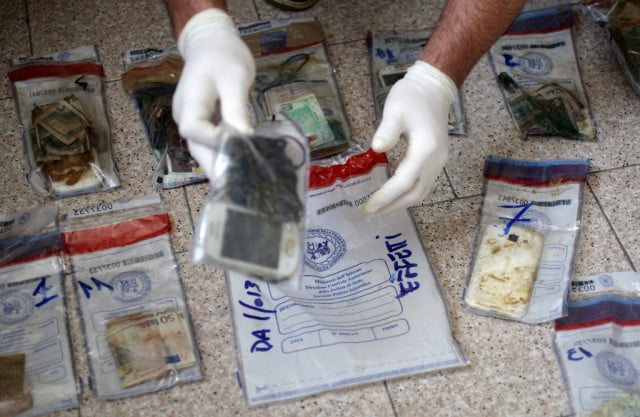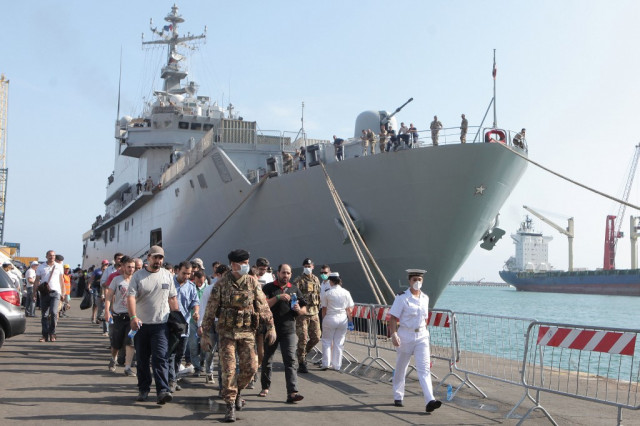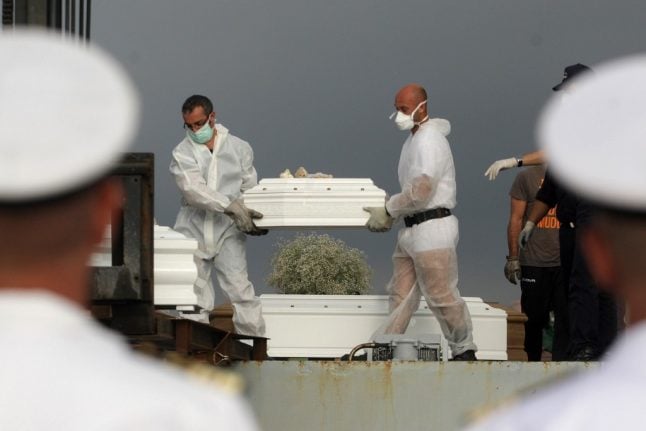Dozens of children died after repeated SOS calls were ignored ahead of the October tragedy, which sent a shockwave through Italy.
The trial of Leopoldo Manna, head of the Italian coast guard operations room, and Luca Licciardi, the equivalent for the navy, will begin on December 3rd in Rome.
READ ALSO: Why an Italian pathologist is fighting to identify the Med's migrant victims

Personal effects of shipwreck victims gathered at a military base in Sicily in November 2015. Photo: Marcello Paternostro/AFP
The fishing boat had set off from Zouara in Libya under the cover of darkness with nearly 480 people on board. It was in Malta's search and rescue zone, 118 nautical miles south-west of the Maltese capital Valletta, when it ran into trouble at 12.39 pm on Friday October 11th, 2013.
Images and recordings from the tragedy were made public in a 2017 documentary. The migrants — Syrians and Palestinians — can be heard appealing to Italian officials, but they ordered them to call Malta instead.
Valletta insisted Rome should deal with the emergency because the boat was only 60 miles off the Italian island of Lampedusa. An Italian patrol boat, the Libra, was also just 45 minutes away.
At around 4:00 pm, a Maltese reconnaissance plane spotted and filmed the boat, and tried to alert the Libra, without success.
'People are in the water'
Back at the command centres, Valletta and Rome were at loggerheads, with Malta urging Italy to send the Libra to the rescue. On both sides, the voices heard in the audio recordings are calm until 5.07 pm, when Malta announced: “The plane has seen the boat capsize, people are in the water.”
The Libra set off towards the stricken boat, arriving just before 6:00 pm to cries of panic. Twenty-six bodies were recovered that day, while 240 people were never found, including around 60 young children.
In the days that followed, Italy's centre-left government launched a vast search and rescue operation between Sicily and Libya dubbed “Mare Nostrum”, which would go on to save over 100,000 people in a year. The Libra was often on the operation's front line and its commander, Catia Pellegrino, the first woman to command an Italian military vessel, was awarded a presidential medal of honour.

People rescued as part of Italy's Mare Nostrum operation in August 2014. Photo: Roberta Basile/AFP
Two investigations into manslaughter and failure to assist people in danger were launched against Pellegrino and several Italian officers, but were later dismissed.
Mare Nostrum was replaced at the end of 2014 by the EU's border agency Frontex. The EU in 2015 launched Operation Sophia to tackle people smuggling, but the Italy-based military operation has since shrunk from a naval deployment to a few spotter planes and drones.
READ ALSO:
- How will Italy's new government approach immigration?
- How would Italy's idea for a new EU migrant distribution system work?
Italy's new government, a coalition between the anti-establishment Five Star Movement (M5S) and the centre-left Democratic Party (PD), has appealed to its European allies to help it shoulder migration from Africa.
Many human rights organisations hope Rome will row back a hardline anti-immigration stance adopted by the previous anti-immigration interior minister Matteo Salvini, who declared he would “close the ports” to charity ships that rescue people in the Mediterranean.


 Please whitelist us to continue reading.
Please whitelist us to continue reading.
Member comments